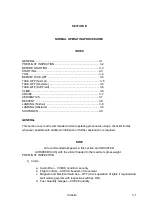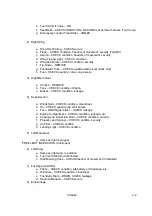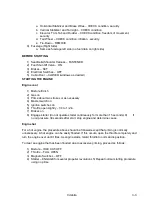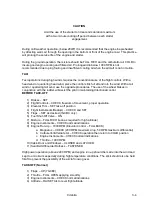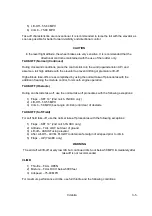
Citabria
2-5
FORCED LANDING (Complete Power Failure)
If the engine cannot be restarted in flight, trim the aircraft to the recommended glide speed.
Remain within gliding distance of the intended of point of landing. Maintain a higher and closer
pattern than normal making allowance for wind.
Excessive altitude can be lost by extending flaps or slipping the aircraft. Diving the aircraft in an
attempt to lose altitude when flying into a headwind will only increase the required landing
distance.
1) Airspeed
— Maintain 60—65 MPH
2) Mixture
— IDLE CUT-OFF
3) Fuel Shut-Off Valve
— OFF
4) Master Switch
— ON
5) Flaps
— UP to increase glide range (7GCBC)
6) Radio
— MAYDAY 121.5 MHz
7) Attempt to position the aircraft approximately 1000 feet above ground level (AGL) over
the intended point of landing or 500 feet when downwind and abeam the intended point
of landing.
8) All Electrical Switches - OFF
9) On Final Approach
a. Airspeed
— 65 MPH (60 MPH minimum) –
b. Flaps
— DOWN after intended point of landing assured (7GCBC)
10)Touchdown with minimum airspeed (three point full stall) if landing on rough terrain.
NOTE
If necessary, after aircraft has come to a complete stop,
remove and activate the emergency locator transmitter from
the aircraft for increased transmitting range.
DITCHING
Should it become necessary to make a forced landing ove
r water, follow the “Forced Landing
Procedures” in addition to the following:
1) Cabin Side Door
— JETTISON
2) Land into wind if high winds are evident or parallel to swells with calm winds
3) Flaps
— UP (allows higher nose attitude at touchdown)
4) Contact the water with nose high attitude
5) DO NOT STALL prior to touchdown
6) After corning to complete stop - EXIT AIRCRAFT
Summary of Contents for Citabria Explorer 7ECA
Page 1: ......
Page 32: ...Citabria 5 4...
Page 33: ...Citabria 5 5...
Page 34: ...Citabria 5 6...
Page 37: ...Citabria 6 3 FIGURE 6 1 AIRCRAFT SPECIFICATIONS...
Page 38: ...Citabria 6 4...

















